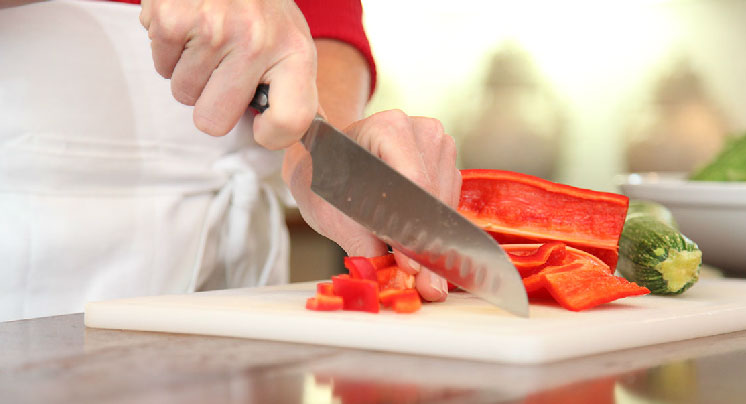Getting the Most from a Recipe
Following a recipe shouldn’t be that hard right? Well, that depends. Here are a couple of tips on how to break down a recipe and simplify your cooking experience.
Preparation:
- Before you start, read the entire recipe from beginning to end.
- Don’t start cooking until you have gathered all your ingredients and cut all your meats and vegetables.
- When you are determining whether a dish has ‘finished cooking’, rely on physical descriptions like ‘juices run clear when poked’ instead of cooking times. Cooking times are general and vary. They should be used as a guide only.
Ingredients (unless stated otherwise):
- Eggs are large.
- Sugar is white granulated.
- Butter is unsalted.
- Flour is all-purpose.
- Herbs, lettuce, and vegetables should be washed and dried.
- Garlic, ginger, and onions should be peeled.
Terminology:
Al Dente – A term most often used to describe pasta. Firm but not hard. A good rule of thumb is to test pasta for doneness 1-2 minutes before the end of the time listed on the box.
Baste -To brush or spoon liquid over food as it cooks – usually broths, stocks, marinades, or wine. Basting adds flavor and helps maintain moisture in meats as they cook.
Deglaze – Adding liquid to a pan in which foods have just been seared or sautéed. The process lifts the bits of browned ingredients and juices from the bottom of the pan incorporating them into the final dish.
Dice – To cut food into small cubes. Diced food is more regularly shaped than minced or chopped foods, and cooks more evenly.
Dredge – To evenly coat with flour, cornmeal, breadcrumbs, or other dry ingredient.
Fold – Lightly combining a mixture until airy. Typically used in baking when adding beaten eggs to a heavier batter.
Mince – To chop food into very small pieces – basically as small as you can get them. Don’t worry about shape.
Poach – To cook food gently in simmering liquid.
Reduce -To cook liquids down so that much of the water evaporates. Reducing intensifies flavors and also thickens.
Sautéing – To cook food in a small amount of fat (such as oil) quickly, moving constantly, over high heat.
Sear – To brown meat quickly over high heat or under a broiler. Searing locks in moisture. Searing is most often used as a first method of cooking followed by slow roasting.
Simmer – To cook a liquid just hot enough for tiny bubbles just break the surface.
Steam – To cook food over a small amount of boiling water.
Zest – To ‘finely grate’ the rind of citrus fruits like oranges, lemons, and limes.
Clean as you Cook:
- CLEAN little bits at a time WHILE you’re cooking.
- Rinse and reuse measuring cups and bowls.
- Minimize the mess!!
Remaining Ingredients and Leftovers:
Cooked Pasta and Rice: Both these items freeze really well. Just make sure they are cool before you store them. Reheating in the microwave makes for a quick fix meal.
Butter: While butter freezes really well, other dairy products such as cream, milk, sour cream and many cheeses do not freeze well.
Fresh Herbs: Herbs will stay fresh in the refrigerator for a week or so if you’ll treat them like cut flowers and place their stems in a cup of water. Once they start to wilt, you can either freeze them in water filled ice cube trays or microwave them (for a few seconds at a time) and store them as dried herbs.
Pasta Sauces: Next time you have a recipe for pasta sauce, double it. Tomato-based sauces freeze very well.
Partial Cans: Instead of letting half a can of something go to waste, label and freeze for a future recipe. Ingredients like creamed corn, chiles in adobo, and salsas freeze really well.
 
Share your tips….





